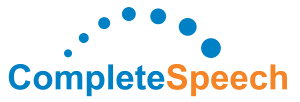Some questions and answers between speech language pathologist about Palatometry.
RE: What is the age range of individuals with whom you have used EPG?
*Answer*: I have worked with kids age 4 to 17, and many adults, age 20 on
up
RE: I am interested to know how young a child can *tolerate* and *hold*
apalatometer, and for *how long*, and *understand* what the palatograph
is telling them to do (with your guidance, of course).
*Answer: * The youngest child I worked with was age 4, who had good
attention span during the assessment, but was still a very active typical
young boy with wiggle issues. His teeth were small and straight so we had to
use denture adhesive to keep his smartpalate in place. He learned to put
his own smartpalate into his mouth by himself and clean it with a
toothbrush. He will look at the computer display when I point out his
correct contact or contrast his incorrect with correct contacts. The best
part is that the child doesn't have to see every time, YOU can see exactly
what he is doing with his tongue to provide specific correct feedback.
Most clients make "gross" connection with their smartpalate and computer
display within minutes, but it's been shown by another study- by Anna
Schmidt from Kent State that it take 2-10 sessions before clients make the
"fine-tuned" connection with the SP and display. Once they make the
"connection" more progress is made. I found this to vary greatly from client
to client.
RE: I am also interested in the logistics of this for the client and family.
Who makes pseudo-palates or what you call "mouth pieces" for children.
*Answer:* The pseudopalate is first made by a dental technician by making a
dental impression. any dentist lab can make this. I refer people to our
local dental instructor who teaches others to make impressions and stone
models. CompleteSpeech company will give any dental lab the specific specs
to make a proper impressions and stone model. (contact
ssessions@completes
www.completespeech.
RE: if you don't mind my asking, how are the costs of this expensive
technology covered? Do clients' parents arrange to have the pseudo-palate
made at their expense and then come to you for intervention?
*Answer;* Parents pay for the customized smartpalates: ( US dollars 300.00
which covers both the dental impression, practice palate, and smartplate
made by CompleteSpeech company.
Therapy intervention is then paid directly to me. I use the going rate for
the area, however I do not provide insurance billing. They do pay for
articulation therapy and the SP as a dental removable treatment appliance.
If you want to purchase the "whole palatomater system" please check
CompleteSpeech website for details. They have several different package
options.
RE: " Correct tongue placement using what the person does best with
vowels can really make the difference with developing correct consonants."
Have you made formal comparisons?
*Answer:* The only comparisons I've made is informal, with each individual
client and what they can do during the assessment. I will check to see
what vowels are clear then use them to shape consonants. No formal
comparisons done yet. Typically I found high vowels such as /i, u/ helps
develop palatal and back sounds. I also found that some consonants that
were thought to be easier to teach in initial or final positions ended up
being easier to teach in the middle of words. (e.g. velar stops sounds were
said to be easier to teach at the end of words however, for most kids I
found it was easier to teach in the middle of words using the palatometer.
RE: Are you able to list the "wide range of speech issues" referred
to above?
*Answer: *I have worked with severe tongue thrust where several clients had
braces on for three years with wide gaps on one side. The palatometer
helped to remediate their pronounced unilateral lisp; of /l,s,z/ (which has
been noted to be hardest to remediate. I used the palatometer technology to
correct their swallow patterns as well.
I have also worked with the deaf population, those with hearing aides, no
hearing aides and cochlear implants. This is where I found tons of success.
They could "see" the placement error and within matter of few sessions,
THEY fixed their own incorrect sounds (r, sh, ch, s, z, l,, j- in judge ) so
on. This was truly remarkable.
I've worked with kids with apraxia with attention problems, and learning
disabilities. They were and are the toughest cases. it takes patience, and
lots of drills. These kids take longer to acclimate to getting use to the
smartpalate. But as I mentioned I teach ALL kids to put on their own
smartpalate. This is another topic for another day to go into but let's say
you need good strong parents to work with you to implement a home practice
program to get the child to put on their own SP. Once they can do this, I
build their tolerance to talking with the SP from 20 words 10 minutes to 30
minutes. They also take longer to make progress primarily to their lack of
attention, self monitoring and behavior issues.
It's been interesting following the phonology group discussions with all the
hard working therapists input but I have found that so many of the
articulation issues and worries are not really issues with the EPG/
palatometer technology. When the client makes their own changes from
"seeing" incorrect to correct placement, their hard work is turned into
success way sooner than traditional therapy. It makes this new generation
therapy so much more gratifying for all parties concerned It actually
strengthens all the knowledge you obtained from speech anatomy, motor
speech, acoustics, clinical phonetics, articulation and phonological process
classes.
I really hope more therapist and clients get a chance to work with the
EPG/palatometer technology.
Best Wishes, Ann


No comments:
Post a Comment